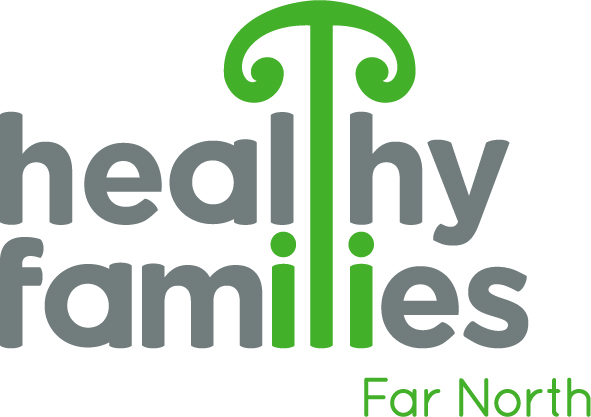The Kerikeri community are celebrating a significant milestone this week, as work gets underway to build Te Amo Pūtoro; the first council owned māra hūpara in the Far North, at the Kerikeri Sports Complex.
The project is years in the making, driven and designed by local advocates and leaders, in partnership with Ngāti Rēhia and the Far North District Council.
A karakia was held on Thursday morning to mark the occasion, with project lead Angela Barker describing it as surreal.

“Looking back six years, it was 2019 when we started this project wanting somewhere safe for our kids to play and it has just evolved and developed into something so much more than just a playground.” she said.
“This space will be one for the generations. It’s for our kids to play and explore, it’s for our māmā to sit and take a break, it’s for our community and visitors to come and learn the history of this rohe… for me, it’s a whānau space that everyone can enjoy.”
Māra hūpara were historically used as play areas, using te taiao and natural materials like logs, rocks and plants, to develop physical strength, coordination and problem solving. Unlike conventional playgrounds, māra hūpara are guided by kōrero tuku iho, the stories of mana tangata, creating an environment for intergenerational play, movement, and storytelling.
Barker said having Ngāti Rēhia involved in the project has given the māra hūpara “so much more meaning.”
“Building that relationship with Ngāti Rēhia is something I would have never been able to do on my own and I am so grateful and feel very honoured to be doing this alongside them,” she said.
“This whole project now means so much more. The historical value this brings, the sharing of kōrero tuku iho and the whenua, the impact that this is going to have on our community – it just feels and means way more than a playground.”
Ngāti Rēhia Rangatira, Kipa Munro, said working with the community is part of their duty as hapū.

“This has always been our place, so it’s always been our duty as a hapū to teach and to inform our community and everyone who resides in our rohe the kōrero about where they are living,” he said.
“It is no different to having our stories all around our rohe. A place of play of course is where our tamariki and mokopuna are, so it’s important that our stories are told at every level.”
“From our mokopuna to our tupuna, e kī ana te kōrero puna ki te puna nē, this starts them on their journey of learning about our culture, our history, and of course Ngāti Rēhia.”
Healthy Families Far North have been part of the project working group to bridge the relationship between non-Māori, local government and local hapū, to better understand how our community spaces can prioritise conditions for whānau wellbeing.
Lead Innovator, Tawhi Tua, said integrating māra hūpara into our public spaces is about nurturing our connections to each other, our history, and our environment.

“Te Amo Pūtoro will provide more than just physical play. By bringing our stories of Ngāti Rēhia to life, this is going to bring that cultural connection which enhances social cohesion, strengthens intergenerational ties, and provides a sense of place for people of all backgrounds,” she said.
“There’s also that connection to the whenua and te taiao and the role that will play when it comes to our mental, emotional, and physical well-being. This is an opportunity to restore our relationship with the environment, and so when people feel connected to a space, they are more likely to spend time there, be active, and to engage in healthy social interactions.”
Te Amo Pūtoro will be the first māra hūpara built on council-owned land in Northland, demonstrating the opportunities that in partnership, local government can unlock strengthened community wellbeing.
“These inclusive environments welcome all ages and abilities, reinforcing the idea that public spaces should serve the whole community,” Tua added.
Tania Proctor, Head of Infrastructure at Far North District Council, said the māra hūpara is an example of what can be achieved when council trust communities to create their own solutions.
“I think the important thing is that it is the community driving what they want, rather than the council determining what’s being built here,” she said.
“It’s been really important for us to be supporters of this… There are so many people that have given their time, their expertise and their energy towards this kaupapa for free, so it’s really special to be here today, to see the significant contribution that’s been made and we’re all very excited to see this come to life.”

Proctor, who is also the President of the Kerikeri Netball Centre, said she was excited for what this means for whānau.
“We have a number of tamariki who are here on playing days for tournaments, so having a space where they can play that is close enough for us to keep an eye on them is really awesome too.”
Angela Barker said she expects to see an increase in sports participation once the māra hūpara is built.
“The whole evolution of this started when we were trying to get our women back into sports and one of the biggest roadblocks to that was ‘what am I going to do with my kids.’”
“I think that is going to be one of the massive measurable benefits of this, seeing an increase in women playing sport because they’ve got a safe place for their kids to have fun while they play sport.”
Te Amo Pūtoro is expected to be completed in time for Matariki, with a community planting day being planned to help shape the space, encouraging further engagement and a shared sense of kaitiakitanga over the māra hūpara.
